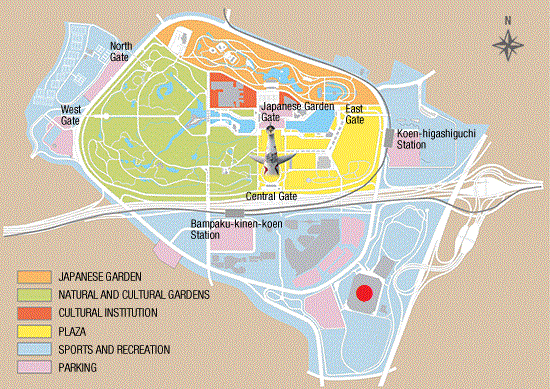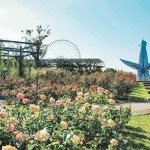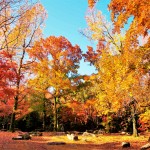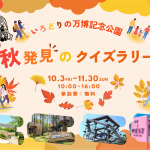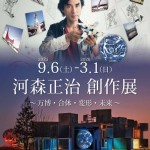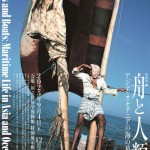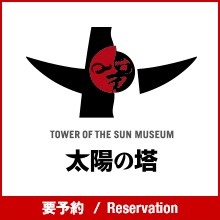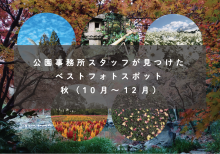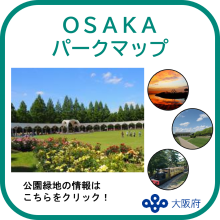Facilities
Japanese Garden
The Japanese Garden is one of the beautiful gardens which represent the Showa Period. The garden was built on 26 hectors area with the best Japanese landscaping techniques. It was a Japanese Government exhibit of the Expo’70.
Going along the stream from west to east, you will find four styles of gardens; the Heian Period (8th-11th centuries) style garden, the Kamakura and the Muromachi Period (12th-16th centuries) style garden, the Edo Period (17th-19th centuries) style garden, and the modern style garden. You can experience the Japanese elegant simplicity, “wabi sabi”.
| Hours | Open ・Monday and Tuesday, Thursday–Sunday: 9:30 a.m.–5:00 p.m. (Last entry 4:30 p.m.) Close ・Closed: Wednesday (Except Holiday Wednesdays) |
| Admission fees |
・Adult (over 15 yrs) 260yen |
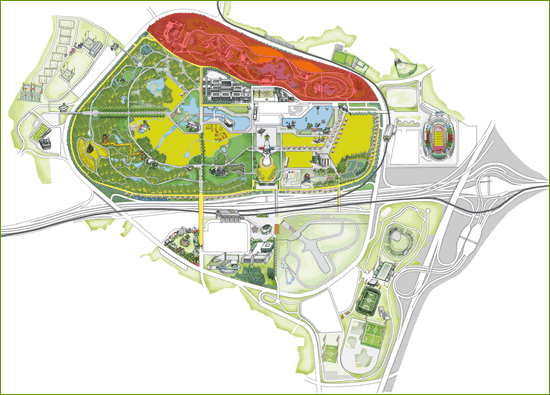
Spring
The Heian Period style spring expresses natural water resources with standing stones (“tateishi”) and ripple-shaped sand (“suhama”). The spring also shows the mood of the Heian Period autocrats’ gardens and secluded mountain areas.

Suhama
Two streams flow north and south from the spring. The suhama is the meeting point of the both streams, and it expresses ocean. Stones are arranged in dry-landscape garden style on the sandbank. You can watch the Kamakura and Muromachi Period style garden.

Shinji-ike Pond
The shape of the Shinji-ike Pond resembles a Japanese Kanji character, “心” (mind). Around the pond, there is the feudal loads’ garden in the Edo Period. The garden is a summarization of Japanese landscaping techniques.

Koi-ike Pond
The Koi-ike Pond is a modern garden with creative arrangements of cut stones. You can enjoy watching about 60 beautiful Nishikigoi carps swimming gracefully in the pond.

Tea house“Senri-an”
You can enjoy viewing a dry-landscape style garden.

Natural and Cultural Gardens
The Natural and Cultural Gardens have an area of about 99 hectares. The gardens are well endowed with nature. The gardens were built on the site of theme pavilions of the Expo’70. The foundation of the gardens was made from the rubble of the theme pavilions. After mounding soil on the foundation, we planted trees there.
Before the Expo’70, there were bamboo forests, rice paddies and fields. However, the Expo’70 destroyed the natural environment. We have made efforts to restore forests on the vast artificial ground. That is remarkable approach in the world. Today, the site is the Natural and Cultural Gardens with beautiful nature landscape.
As the Natural and Cultural Gardens have various kinds of enjoyable spots, you will have fun time as well as relax in green scenery.
| Hours | Open ・Monday and Tuesday, Thursday–Sunday:9:30 a.m.–5:00 p.m. (Last entry 4:30 p.m.) Close ・Closed:Wednesday (Except Holiday Wednesdays) |
| Admission fees | ・Adult (over 15 yrs) 260 yen ・Children (7 – 15 yrs) 80 yen ・Children (under 7 yrs) Free |
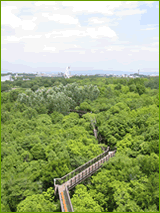
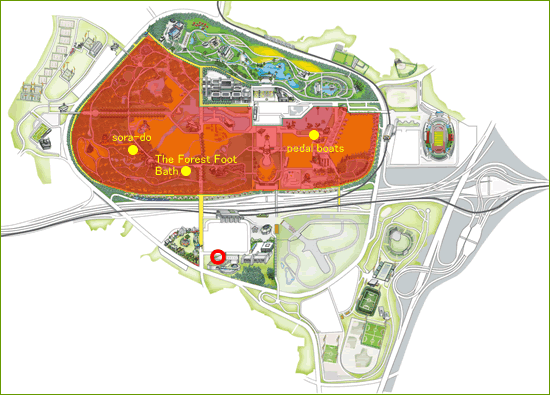
Sorado (Aerial Promenado)
The “Sorado” is named from Japanese words “sora” (sky) and “do” (road). The Sorado is 300 meters long wooden aerial promenade. It is located between 3 meters and 10 meters above the ground. You can enjoy birds-eye view and taking a walk in the mid-air. 【For free】
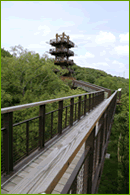
Mori-no-Ashiyu (Forest Foot Bath) *Temporary closure
The Forest Foot Bath uses biomass energy to heat water. The fuel of a boiler is thinned wood from forests in the Expo’70 Commemorative Park. There is also a thermal power generator, the “Stirling engine”. You can enjoy taking a foot bath within10 minutes.【For free, but charge for using towels】
| Hours | Open ・Monday and Tuesday, Thursday-Sunday:10:00 a.m.-4:00 p.m. (Last entry 3:30 p.m.) Close ・Closed:Wednesday (Except Holiday Wednesdays) and from June to September, December and January |

Dream Pond pedal boats
The Dream Pond is the largest pond in the Natural and Cultural Gardens. You can enjoy riding various shapes of pedal boats such as whales and swans.
| Hours | Open ・Monday and Tuesday, Thursday–Sunday: 9:30 a.m.–5:00 p.m. (Last entry 4:30 p.m.) Close ・Closed: Wednesday (Except Holiday Wednesdays) |
| Fees | 2 seat pedal boats (20 minutes) 1000 yen *extra fees (every 10 minutes) 500 yen 4 seat pedal boats (20 minutes) 1,500 yen *extra fees (every 10 minutes) 750 yen |

Expo'70 Pavilion
Opened in March 2010, the Expo’70 Pavilion (Expo’70 Commemorative Hall) employs the renovated Steel Pavilion of the original Expo as a museum to commemorate the 40th anniversary of the Japan World Exposition 1970.
During the original Expo, the pavilion was the site of theater, traditional arts, and musical performances. Now, in addition to using the corridors, which are the flow lines of the hall, as an exhibition space, the facility is open to the public to commemorate the original Expo itself. There are roughly 3,000 important photos, videos, and other important material used during the Expo on display.
| Hours | Open ・Monday and Tuesday, Thursday–Sunday: 9:30 a.m.–5:00 p.m. (Last entry 4:30 p.m.) Close ・Closed: Wednesday (Except Holiday Wednesdays) |
| Admission fees | 500 yen for high school students and older, free for those younger. A separate admission fee of 260 yen for high school students and older, and 80 yen for primary and junior high school students is required for the Natural and Cultural Gardens |
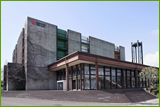
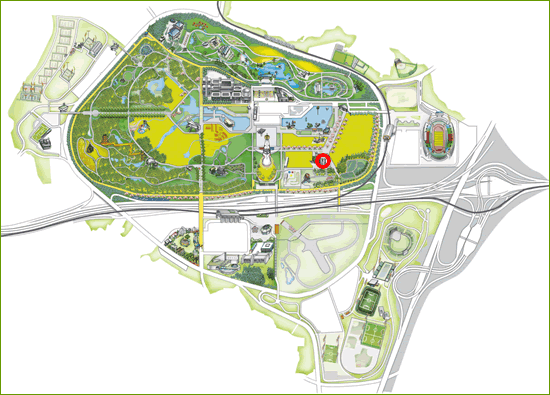
The Hall interior
Foyer
The entrance lobby to the Expo’70 Pavilion is about 1,000 square meters.
The foyer serves as the entrance to the theater in what was originally the Steel Pavilion. In addition to the Ikeda-phone, one of the steel sculptures of musical instruments shown in the Expo, visitors can see a model of the entire Expo grounds and other exhibits free of charge.

Before Expo
This presents records of events leading up to the original exposition, including a history of other World’s Fairs.
During the original expo, this site was the exit from the Space Theater inside the hall from which viewers left the premises. This area provides the opportunity to view items from more than 100 years of World Fair history, from the first held in London in 1851 to the 1970 Expo in Osaka. Included are items provided by the Bureau International des Expositions in Paris. In addition, there is a model of the so-called Symbol Zone of the Expo’70. Visitors can see the Expo Tower, the symbol of the event, the Tower of the Sun, which expressed the theme of the Expo, and the theme pavilion, including the festival grounds and the great roof.

The largest project in history gets underway!Frombidding to theselection for the Expo
This presents photographs and video of the excitement of the people dedicated to bidding for the Expo’70 and the site planning.
Here you can view what it was like at the time. See the site before the Expo became a reality…the prices…the starting wage for university graduates…and the events of the day, before the Expo opened.

The largest project in history gets underway!From the selection for the Expo to the Expo'sopening ceremony.
This presents photographs and video from the time the decision was made to hold the Expo in Osaka, the start of construction work, and the opening ceremony.
Before the Expo, Senri Hills was a lush natural environment with bamboo groves and rice paddies. The videos and photos show the transformation brought about by the Expo as the original scenery disappeared and the Expo site grew into the space for the city of the future. Also exhibited are materials used at the time, including reproduction proofs for the Expo symbols and printing, and the basic diagrams for the Expo planning.

The music space theater hall with unlimited potential
The Steel Pavilion had different exhibits that utilized steel, and its theme was the steel song. One of those exhibits was the musical instruments made from steel in the foyer. The pavilion itself was considered a steel musical instrument, however, and there were many performances, including piano recitals and presentations of gagaku. Visitors can also see how the hall was illuminated for the presentation of light shows.

Best of the Expo
The Expo’70 had an astonishing number of visitors, with 6.4 million people coming for the entire event. The single-day high was 830,000.
This exhibit has the actual signboards used to show the waiting time for entry to the theme pavilions. The exhibit gives visitors an idea of the astonishing number of people who attended, including attendance figures and the number of lost children.

Pavilion Pavilion
This shows the different pavilions with exhibits from Japan and overseas.
This consists of views of the exteriors and interiors of the pavilions at the Expo, and has information on the various exhibits on the walls and ceilings of the corridors. Visitors will have the sense that they are actually walking on the Expo grounds. There are displays of the pavilion pamphlets and cards with detailed information on each of the pavilions. This allows visitors to have an understanding of the technology and culture of each country and region at the time.

Construction Olympics / View from the monorail Window
This exhibit presents the pavilions as architectural structures created with a wide range of ideas and technology.
The architectural forms of the pavilions that presented the City of the Future on the Expo site had a distinctive beauty. They incorporated many different ideas and technologies, including hangings and sculptured items. The designs used to create the City of the Future were new and innovative. Visitors can see how the pavilions looked at the time from the windows of the monorail used to transport people from place to place at the Expo site.

Experiencing the Progress and Harmony for Mankind Pavilion
This profiles the pavilion with the Progress and Harmony for Mankind exhibit, the theme of the Expo.
The pavilion consisted of three areas: The basement, the ground, the mid-air. The basement was below the plaza in front of the Tower of the Sun. The mid-air featured a roof with a large truss structure. Dominating the scene over the land area connecting the two was the Tower of the Sun. Visitors entered the Tower of the Sun from the underground exhibit. The flow line to The mid-air exhibit at the roof was through the statue’s arms. The entire exhibit was a conception of the past, present, and future. The present exhibit features models of the theme pavilion, masks created by Taro Okamoto, and parts of the theme pavilion itself, with some of the masks used for the display in The basement.

The Flowers at the Expo Site / Attendants Uniforms
There is an exhibition of reproductions of the Attendants uniforms for the pavilions.
Here are the uniforms worn by the Attendants at the pavilions on the Expo’70 site, as lovely as flowers. The exhibit is based on some of the actual uniforms and their photos, as well as elaborately reproduced uniforms.

Hello from the Countries of the World / Festival
The Expo had a festival plaza and festivals that lasted over a period of several days on the site. These are shown in videos and photographs.
A variety of events commemorating National Days and other special days were held at each of the national pavilions, and the events conducted at the festival plaza presented different nationalities and cultural specialties. This expanded the interaction of cultures both at home and abroad. The festival plaza had the giant robots Deme and Deku, which appeared at the opening ceremony and during Expo events. The robots were installed at the festival plaza. The eyeball portion at the top of Deme served as a control compartment from which the director of the site performances issued instructions. The Deku robot received those instructions and presented sound and lighting effects at the site. This exhibit features detailed reproductions of the two robots.

The 1,500 people backstage: The records of the staff
This exhibit presents video and photos of the people who worked at the Expo.
Be sure to take a behind-the-scenes look of the struggles of the people who worked at the Expo site. They include the ticket sales staff who served the long lines of people entering the Expo grounds, the security personnel who kept order at the entrance gates thronged with people, the people assigned to look after lost children, and the night-time janitorial staff.

Vehicles / Vehicles of the future
This is an exhibit of electric vehicles visitors were able to ride and experience the most advanced technology of the day.
The vehicles used at the Expo site included those that were environmentally friendly, and those which incorporated the latest technology to provide a vision of the future. This exhibit displays electric bicycles and automobiles. The bicycles were used by the media and to convey urgent information. The automobiles were used as taxis at the site.

Expo Collection
This presents collectors’ items from the Expo’70.
This area within the Expo’70 Pavilion serves as a place for Expo hobbyists to exchange information, and for the exhibit of Expo-related goods. Here are exhibited official Expo posters and the posters publicizing events at the Expo hall. There is also a rotating exhibit of detailed pavilion models made with craft paper to a scale of 1-300.

Made in Expo'70 / Items whose development was driven by the Expo
This exhibit features items created with the technological innovations spurred by the Expo ’70 and illustrations of the extremely popular items.
Some of the items presented at the Expo have become more widely used today in modern versions. These include the wireless telephone of the Telecommunications Pavilion, which is today’s cell phone; the ultrasonic bath at the Sanyo Pavilion, which was the forerunner of the baths used for long-term care; and the electric bicycles and automobiles at the site that anticipated the electric vehicles of today.

The Expo lives today: The closing ceremony, removal, green spaces
The land on which the event was held was once filled with trees and fields. This presents the efforts made to restore the area to the original state after the Expo closed.
Visitors can watch the transformation over time of the Expo site to the lush Expo Commemorative Park. Today’s park is not merely a place for people to go to relax. It has been created based on the Expo’s universal theme of the Progress and Harmony of Mankind and incorporates the themes of contemporary society, including the symbiosis of people and nature and human interaction. Today’s visitors will be treated to an Expo Commemorative Park created with the intent to recreate the natural forests and activities to protect the environment for the future.

Heritage of Expo
The Expo’70 Pavilion was the Steel Pavilion when the Expo was held. In the same way, various facilities and monuments from the original Expo remain on the grounds of the Expo Commemorative Park.
Tower of the Sun
The Tower of the Sun was created by artist Taro Okamoto and built as part of the theme pavilion at the original Expo. After the Expo closed, it has remained as a symbol of the Expo Commemorative Park.

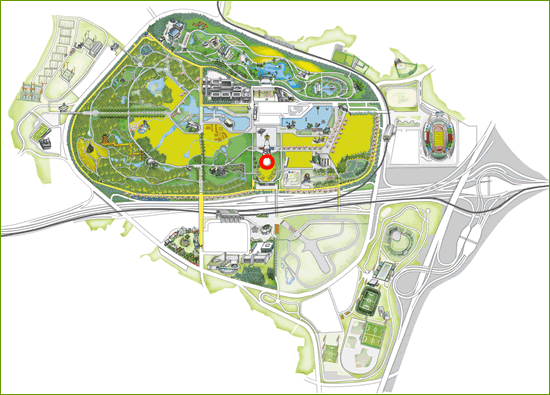
Japanese Garden
The Japanese Garden were an exhibit created by the Japanese government that incorporated the best of Japanese landscaping technology. The trees and shrubs have continued to grow since the Expo, and now constitute part of the impressive scenery. Senri-an, the teahouse in the Japanese Garden, retains its original ambience, and visitors can still enjoy Japanese tea there.

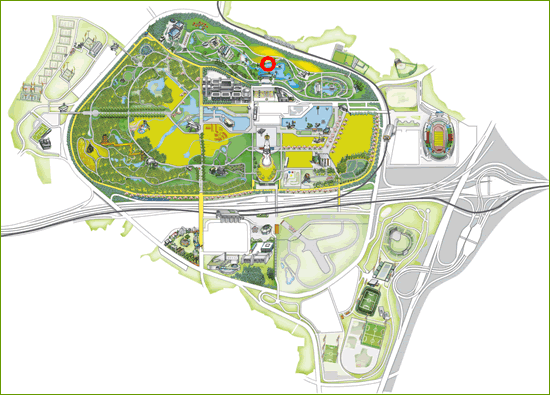
The Japan Folk Crafts Museum, Osaka
The Folk Crafts Museum exhibited the beauty of traditional folk crafts at the Expo’70. It remains today to preserve and present items of cultural importance.

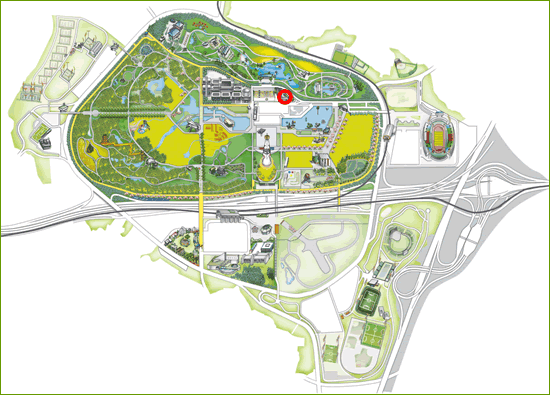
Rose Garden
These Garden at the original Expo received donations of roses from nine countries in the wish for peace. They were Belgium, Canada, Germany, France, New Zealand, Denmark, Great Britain, the U.S., and Japan. The garden is lovingly tended today for the enjoyment of visitors.

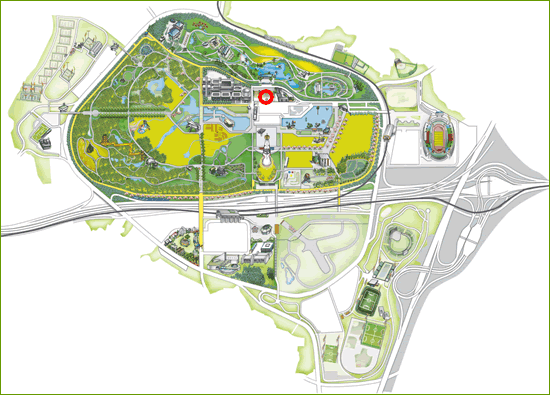
Dream Pond / Fountain
The Isamu Noguchi Fountain is a monument at Dream Pond, the largest in the Expo Commemorative Park.

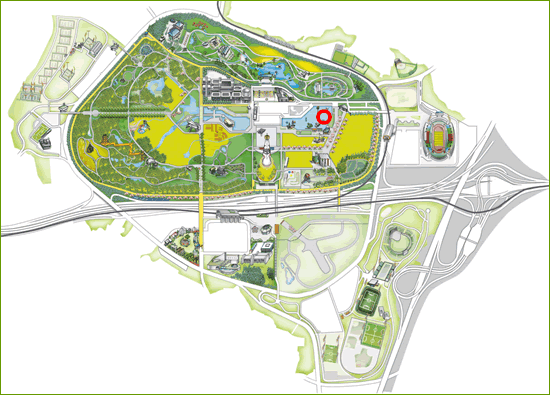
Dream Pond / Artwork
Sculptures made of steel that surrounded the Dream Pond during the Expo’70 still remain today.

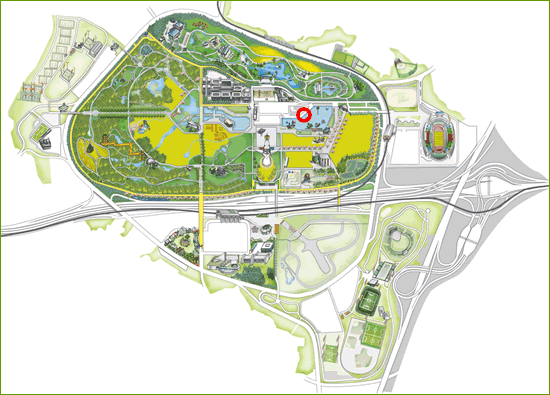
Sora
Different art objects were exhibited on the Expo site as they were around the Dream Pond. Sora is the work of Philip King, and its beauty still lives today.

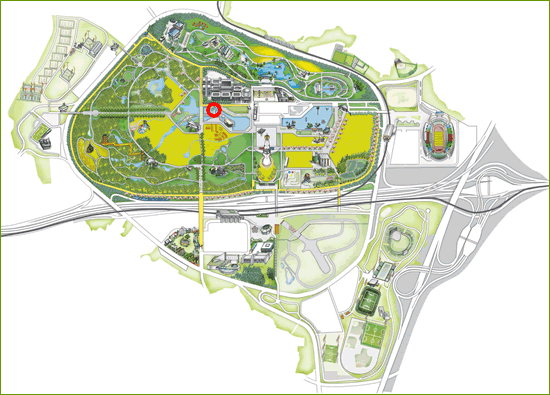
The roof monument at Festival Plaza
The Festival Plaza was used as the site for the opening ceremony and many different events during the original Expo. At the time, it had a large roof designed by Kenzo Tange. Part of it remains on the site as a monument.

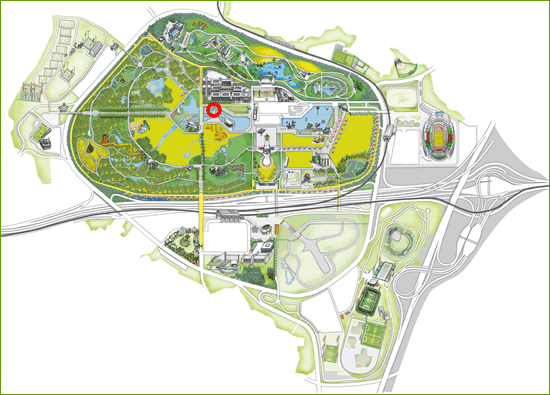
National Museum Ethnology
The National Museum of Ethnology (Minpaku) is a combination museum and research institute whose objective is to further the knowledge and understanding of different cultures. Their publications and exhibitions represent the results of research on ethnic communities and cultures throughout the world.
The museum’s galleries display ethnographic materials in nine world regions, and in thematic exhibits that focus on language, music, and other fields. Their exhibitions give visitors access to a wide range of cultures. They also present special exhibitions, temporary thematic exhibitions, and a variety of cultural events and performances.
The first floor of the main building has a large, hand-operated organ from the Netherlands, a museum shop, and museum restaurant with special menu. Entry to the first floor (ground floor) is free. Admission fees are required for the main galleries (second floor) and for special exhibitions.
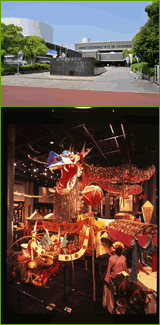
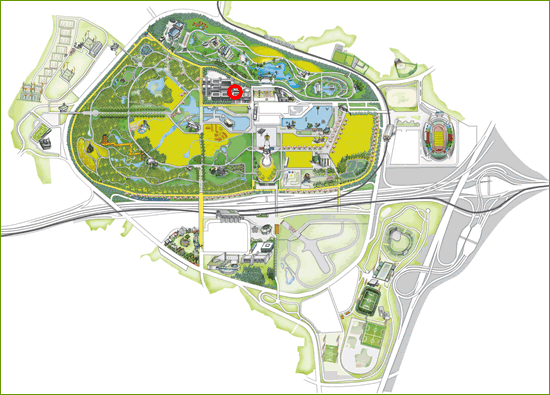
The Japan Folk Crafts Museum,Osaka
This museum was remodeled and opened as a successor to the facility for the Folk Crafts Museum of Tokyo that had exhibits in the Japan World Exposition 1970. The content of the exhibits are primarily new and old folk crafts used in daily life and modern items created by individual artists, including Japanese ceramics and porcelain, dyed fabric items, bamboo crafts, lacquer ware, leather goods, paper goods, metal goods, knit items, and artwork. There are special exhibits twice a year, in Spring and Fall.
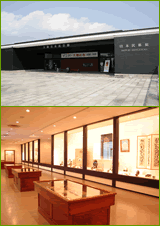
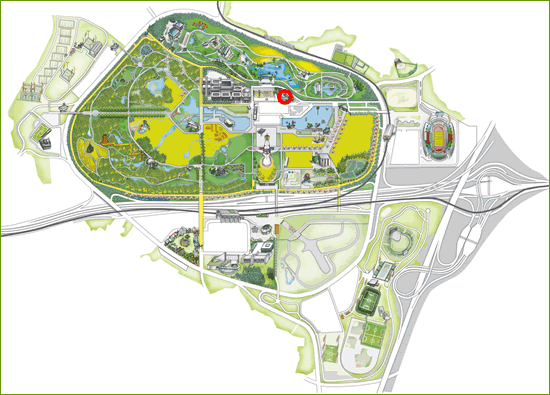
EXPOCITY
EXPOCITY, a large complex facility covering approximately 172,000㎡ of land combining entertainment and shopping, consists of 8 large entertainment facilities and the Mitsui Shopping Park Lalaport EXPOCITY with a total of 305 shops.
With ”The Joy of Playing, Learning, and Discovering in one place”, as its theme, its museum, cinema-complex, facilities combining education and entertainment, restaurants offering entertainment, and experience type shops offer brand new experiences and excitement.
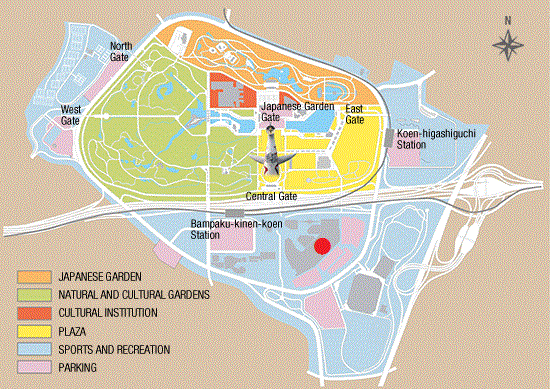
Suita City Football Stadium
A soccer stadium with seating for 40,000 spectators, it is the home ground of Gamba Osaka, a team in the J League. It can be used to hold a variety of events including soccer matches and other sports events.
